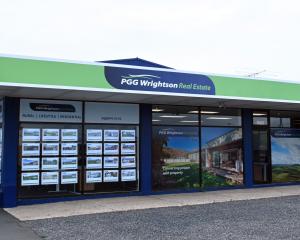
The BNZ-BusinessNZ Performance of Services Index for the region in July was 61.9 points compared with Northern EMA and Business Central both on 54 and Canterbury Employers Chamber of Commerce on 49.9.
The seasonally-adjusted New Zealand index for July was 55.1, 2.4 points higher than June. A reading above 50 indicates the sector is generally expanding and below 50, it is contracting.
Otago-Southland Employers Association chief executive Virginia Nicholls said the July reading of 61.9 points was up on the average from last year of 59.7.
In November last year, the region reported 69.6 points, in December 73.2 points, and in June this year, 49.6 points.
The regional breakdown in categories had orders/new business and activity/sales levels both in expansion above 60.
Employment levels were at 53.3 and supplier deliveries were 53.8. Stocks/inventories had fallen to 46.2.
The tourism sector had a great start to the winter season on the ski fields and there were a large number of tourists visiting across the region, including families on school holidays. Those visitors culminated in ``solid winter sales'', Mrs Nicholls said.
Businesses providing services to the construction industry had steady demand although shortages of skilled and unskilled staff remained a concern.
The proportion of positive comments sat at 52% in July compared with 50% in June and 63% in May, she said.
``There remain concerns by business on the Employment Relations Bill which, if implemented in its present form, will change the industrial relations landscape significantly.''
BNZ senior economist Doug Steel said it was good to see the PSI bounce firmly in July, especially in the context of a further weakening last week in its sister survey for the manufacturing sector.
However, July's PSI lift to 55.1 from June's 52.7 had only recovered just more than half of the previous month's drop.
The trend was still slowing, he said.
The three-month average had slipped to 54.9, the lowest it had been this year and lower than last year's average of 56.9.
It suggested services GDP growth had slowed from the 3.3% annual pace it recorded in the year to March towards the mid-2% mark.
``Combined with last week's softer manufacturing data, the composite indicator is suggesting overall annual GDP growth is around 2% heading into the second half of the year - somewhat lower than most are forecasting.''
Analysing the July results, Mr Steel said tourism remained an important source of growth.
The PSI also showed strong growth occurring in those industries closely associated with population growth such as health and community, as well as the cultural, recreational and personal services industries.
Wholesale trade was buoyant but retail stood out for its weakness in July, he said.
The weakness might reflect some payback from a strong June.
``In any case, it is another spending indicator for July showing no sign of boost from the fiscal stimulus package.
``Perhaps that boost is being offset by the likes of a slower housing market or higher fuel prices.''












